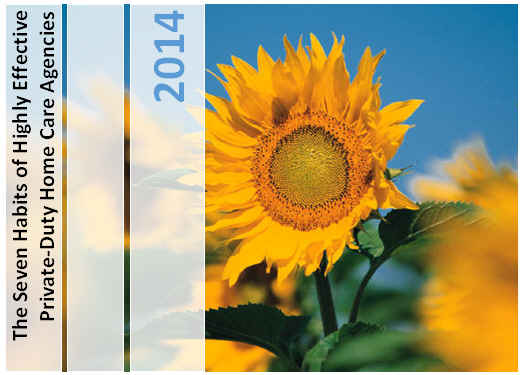AARP (formerly known as the American Association or Retired Persons) has released a guide entitled Caregivers and Technology: What They Want and Need. You can access the report as a PDF here. The subtitle of the report is A guide for innovators – research from a nationally representative sample of America’s 40 million family caregivers.
The Ankota blog is primarily directed towards home care agencies and their professional caregivers, but we can certainly learn from this family caregiver feedback and see what technology solutions apply to our organizations.
The study is very easy to read and has many nice graphics to represent the survey results. We've included several of them below.
How Many Caregivers and Care Recipients are There?
One compelling set of figures from the study is their projection of home care need in 2020. As shown in the graphic, they predict that their will be 117 million care recipients (roughly one third of the US population) and that they will be served by 45 million family caregivers and 5 million professional caregivers. Two key takeaways are 1) the need is huge, and 2) professional home care is only filling 10% of the total need. The reality of paid caregiving is that it is available to the wealthiest citizens who either have independent wealth or invested in long term care insurance, and it's also available to the least wealthy citizens who have care paid for via Medicaid or other community programs. The rest of society provides care themselves to their family members (and in fact when professional caregiving is available, it is likely to only cover part of the need).

Key Takeaways from the Study:
Home care professionals and technology providers should read the full report, but here are a few takeaways that stood out for me:
-
Only 7% of family caregivers are using some kind of technology
-
71% of family caregivers are interested in technology
-
Some of the most useful technologies are related to scheduling and med adherence.
-
Some of the least useful technologies are to help find assisted living or caregivers and motivational applications
-
The activities performed by family caregivers are essentially identical (no surprise) to those done by professional caregivers (see graph below)
-
Areas of need for innovation are broad
A Call for Business Model Innovation
As many of y ou know, here at Ankota we enjoy innovating in technologies to improve caregiving and prepare for the future. This is why in addition to providing home care management software, we have capability to manage care transitions, and to affordably monitor at risk individuals to give early warning signs of preventable hospitalizations. We would love the opportunity to innovate with agencies who want to embrace family caregivers. For example, what if we could enable our scheduling software to both professional caregivers and family caregivers and to give visibility to the full schedule in our family portal app? If this sounds like something you'd be interested in, please contact us to discuss it further.
ou know, here at Ankota we enjoy innovating in technologies to improve caregiving and prepare for the future. This is why in addition to providing home care management software, we have capability to manage care transitions, and to affordably monitor at risk individuals to give early warning signs of preventable hospitalizations. We would love the opportunity to innovate with agencies who want to embrace family caregivers. For example, what if we could enable our scheduling software to both professional caregivers and family caregivers and to give visibility to the full schedule in our family portal app? If this sounds like something you'd be interested in, please contact us to discuss it further.
For other best practices in the Home Care space, you can download our white paper, Seven Habits of Highly Effective Home Care Agencies. If you're interested in scheduling an online demo of our home care or care transitions software solutions, just click this button:
Ankota provides software to improve the delivery of care outside the hospital, focusing on efficiency and care coordination. Ankota's primary focus is on Care Transitions for Readmission avoidance and on management of Private Duty non-medical home care. To learn more, please visit www.ankota.com or contact us.






Your Comments :